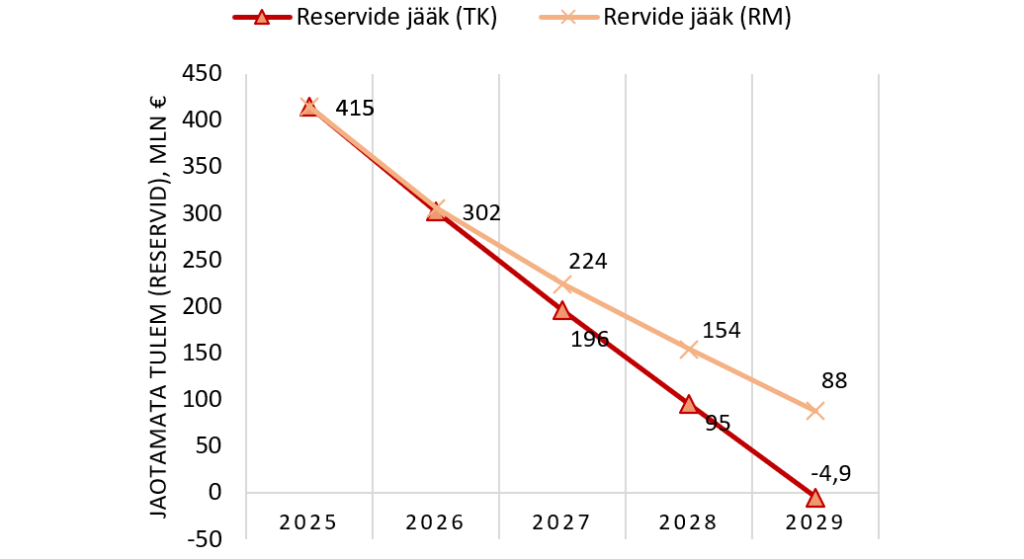Report: Estonia could learn how to control healthcare costs from the Netherlands
The expenses of the Estonian Health Insurance Fund significantly exceed its revenues, and the accumulated reserves will be depleted in the next five years. Other European countries in the same situation have cut healthcare services and increased people’s co-payments. According to the Foresight Centre’s new short report “Other countries’ experiences in managing healthcare budget deficits”, both solutions have worsened public health and deepened inequality.

Kaupo Koppel, an expert at the Foresight Centre, notes that the Health Insurance Fund’s reserves are expected to run out a year or two later than previously estimated, but additional funding is still needed.
“Starting this year, the Health Insurance Fund’s expenses will exceed its revenues by nearly 100 million euros per year,” said Koppel. “We are in a situation where our healthcare system is permanently in the red and is only operating at its current level thanks to previously accumulated reserves. The latest forecasts show that these, too, will run out by 2031.”
Estonia is not the first country in Europe where healthcare costs exceed revenues, and the Foresight Centre analysed the other countries’ experiences in managing budget deficits.
An analysis of measures implemented by other countries revealed that limiting personnel costs in healthcare has been the main solution. For example, healthcare workers’ wages have been cut in Latvia, frozen in Finland, and salary increases have been slowed in Denmark and the Netherlands. Stricter regulation of pharmaceutical prices has been a common practice, and several countries have increased public funding for healthcare through tax increases or budgetary allocations.
The Foresight Centre notes that Ireland, Greece and Latvia have had the worst experiences. One of the more successful examples is the Netherlands. There, rising healthcare costs were curbed by price restrictions and digital monitoring systems that help identify and prevent unnecessary tests and medicines.
Reducing the volume of public health services has led to the most negative consequences for public health in the countries studied. It has lengthened treatment waiting times, worsened the accessibility of services and increased people’s co-payments. For example, in Greece, Latvia and Ireland, large cuts were accompanied by a deterioration in public health, growth in mental health problems and avoidable hospitalisations, plus a general increase in inequality.
Using the example of the Netherlands, the Foresight Centre points out that agreements concluded with hospitals and doctors, the regulation of price increases being part of them, have proven effective in curbing growing healthcare costs. For instance, the costs for family physicians could only increase by up to 2.5% per year. Moreover, capitation-based funding was reduced. At the same time, a goal was set to prescribe more generic medication, and when this was achieved, funding was restored.
The short report “Other countries’ experiences in managing healthcare budget deficits” ( in Estonian) has been prepared within the framework of the Foresight Centre’s research stream “Healthcare Sustainability”. The purpose of the research stream is to find future opportunities and analyse alternative options to diversify healthcare funding and their impact on the accessibility of healthcare services in Estonia up to 2050.
Latest news
-
27.10 2025Report: The Estonian economy is more knowledge-intensive, but Lithuania makes more money even with simpler businesses
The Lithuanian economy is growing faster than the Estonian economy, and the Lithuanian government has been bolder in stimulating the economy with tax reliefs. According to the Foresight Centre’s new short report “Estonian Economic Competitiveness in Comparison with Latvia, Lithuania and Finland”, knowledge-intensiveness is considered to be Estonia’s strength, while Lithuania is able to generate substantial revenue even with simpler services.

 An independent think tank at the Riigikogu
An independent think tank at the Riigikogu